Case Studies About Social Media Marketing and its Effectiveness
Author & Editor
Content Specialist
Published on: Sep 4, 2023 Updated on: Oct 3, 2025
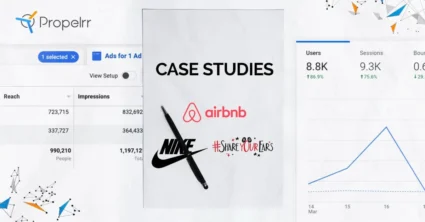
Social media marketing offers an exceptional stance insofar as campaigning is concerned.
Case studies on utilizing social media marketing can increase brand awareness by showcasing the effectiveness of social media strategies and tactics.
Social media case studies provide evidence of successful social media campaigns that can inspire other brands to adopt similar strategies. Case studies, likewise, provide real-life examples of social media success, which can help build credibility for your brand. Indeed, case studies are a testament to the return on investment that your business can get with the right social media service.
Why is social media important?
According to a recent study, there are around 4.76 billion social media users and that 137 million new users have become online within the past year. Given the sheer number of social media users, it is proof that social media marketing is important for brands.
Keep in mind that a digital marketing agency would conclude that engaging with social media users through social media marketing gives you the opportunity to build trust with potential customers, partners, and employees. Thus increasing your brand awareness and reach since social media allows for easy and effective brand building.
55% of people learn brands through social media
In this technological age, it is a common place for people to discover products, services, or companies through social media. In fact, according to a report, 55% of consumers learn about companies and brands through social media. So, capitalize on this growing network and make a strong social media presence to enable your audience to engage with you and ultimately build customer loyalty.
79.7% of people make purchases based on online or social media advertisments
Statistics show that 79.7% of people make purchases based on online or social media advertisements. This implies that a significant number of users are influenced by social media advertisements. A strong social media presence presents an incredible opportunity to proclaim your brand, increase brand awareness, and invite new and potential customers.
How to measure effectiveness of social media marketing?
Measuring the effectiveness of your social media marketing strategies is crucial for optimizing your campaigns, refining your targeting, and achieving your marketing goals. It also allows you to evaluate your ROI, stay competitive, and make data-driven decisions that can help you achieve success on social media platforms. That said, here are five ways to measure social media marketing effectiveness.
1. Reach
You can determine the audience reach of your content using the “reach” measure. In other words, it shows how many people have already seen your publication once. Therefore, care should be used when utilizing reach as a success statistic. This is due to the reach metric's frequent usage of estimates. The advantage of this, though, is that it enables you to estimate the size of your possible audience. A reach of 10,000, for instance, indicates that 10,000 individuals will at least once view your publication in their news feed.
2. Impressions
Impressions reflect how frequently your publication has been displayed on screens. The same person can view this content many times. In the preceding example, if your reach was 1,000 and you had 10,000 impressions, you could conclude that users had viewed the publication 10 times.
3. Social media mentions
The number of times a person or influencer has cited your work is referred to as the number of mentions. This is one method of expanding your audience. Getting frequently cited may indicate that the quality of your article is appreciated. For instance, the @personname function is used when a user or influencer mentions you in a post or shares your material. They will let you know that they've mentioned you.
4. Customer service
Having good customer service ensures that you can build a strong reputation and culture among your business. Providing excellent customer service always helps you keep clients. Keeping consumers improves revenue and is also far less expensive than trying to acquire new ones.
Retention through customer service is one of the most important factors that could measure your social media marketing effectiveness. If your customers are more likely to complete a transaction or purchase because of good customer service brought by your social media marketing, then this shows that your social media marketing is effective.
5. Sentiment analysis
Sentiment analysis can be a useful tool for measuring social media effectiveness by providing insights into how people feel about a brand, product, or service. By tracking sentiment over time, comparing to competitors, identifying influencers, and measuring customer satisfaction, brands can make data-driven decisions and optimize their social media strategies for better results.
There are many ways to measure your social media marketing effectiveness. By tracking metrics such as engagement, reach, brand mentions, and sentiment analysis you can determine the impact of your social media campaigns. Indeed, determining social media effectiveness is what social media marketing case studies use to look into benchmarks for their successful social media campaigns.
Unique social media case studies we love
It's always a good idea to benchmark your social media marketing with those made by other brands. This benchmarking is done through social media marketing case studies. These case studies allow you to take in input and apply them to your own accounts. This way, you can achieve similar, if not better, results.
That said, let us look into 8 social media case studies that you need to look into.
1. Airbnb’s Wonderlust Showcase
Airbnb’s social media marketing campaign utilized Instagram to showcase unique and inspiring photos of their rental properties around the world. By sharing stunning photos that inspired wanderlust in their followers, they were able to increase brand awareness and drive bookings.
The effect of this social media campaign garnered Airbnb over 6.7 million followers on instagram, resulting in an increase in Airbnb’s engagement rate of 1.5% on Instagram, which is higher than the average engagement rate for the travel industry.
Campaign: Airbnb’s Wonderlust Showcase
Platform: Instagram
Campaign outline: Airbnb’s success is attributable to its effective use of Instagram in showcasing stunning and inspiring photos of its rental properties around the world.
What worked? Airbnb's social media campaign was successful because it effectively used visual storytelling, user-generated content, authenticity, and consistency to create a strong and engaging social media presence. By showcasing the unique value of their brand on Instagram, they were able to increase brand awareness and drive bookings.
2. Make-A-Wish Foundation’s Share Your Ears
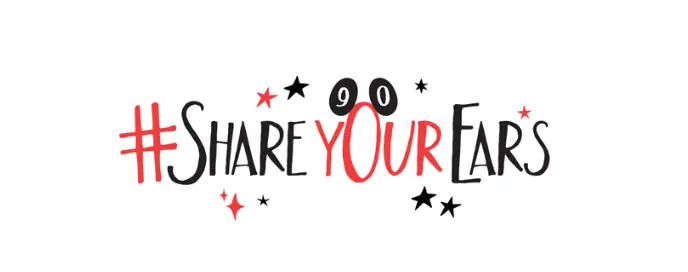 Photo courtesy of Make-A-Wish via worldwish.org
Photo courtesy of Make-A-Wish via worldwish.org
Make-A-Wish Foundation was able to increase its social media reach, audience, and engagement when it partnered with Disney in a “Share Your Ears” campaign.. The strategy of this social media campaign is rather straightforward: Ask people to take a photo of themselves wearing Mickey Mouse ears, post it on social media with a hashtag #ShareYourEars. After that, a $5 donation would be made to the “Make-A-Wish” foundation.
This social media marketing campaign resulted in over 1.7million photos posted and 420 million social media impressions., which ultimately led to a total increase of 330% in social media reach and a 554% increase in engagement during the campaign.
Campaign: Share Your Ears
Platform: Twitter
Campaign outline: Take a pic with Mickey Mouse ears, then post it with #ShareYourEars.
What worked? The marketing strategy worked because it relied on the people to post or advertise for the Make-A-Wish foundation. This not only increased the reach of the brand, but also made it organic such that user engagement was prioritized.
3. Nike’s #BetterForIt
Nike created the #BetterForIt Campaign on social media, targeting women with inspiring messages about health and fitness. They used a combination of social media platforms, including Instagram, Twitter, and Facebook, to promote the campaign and encourage women to share their own fitness stories.
The campaign was a huge success, reaching over 800,000 retweets on Twitter, with Nike’s Instagram account gaining over 50,000 new followers within just a week following the campaign. Accordingly, the success of this campaign is shown when Nike expected to garner over $2billion additional sales in 2017.
Campaign: #BetterForIt
Platforms: Instagram, Twitter, Facebook
Campaign outline: Nike's #BetterForIt campaign was a marketing initiative that aimed to inspire and motivate women to embrace fitness and become more active. Its goal was to encourage women to participate in fitness activities.
What worked? Nike's #BetterForIt campaign was successful because it effectively targeted its audience, delivered an inspiring message, used a multi-channel approach, leveraged influencer marketing, and used data and analytics to optimize its approach. By doing so, they were able to create a campaign that resonated with women and helped to build brand loyalty and engagement.
4. Marketing 360’s Social Media Case Study
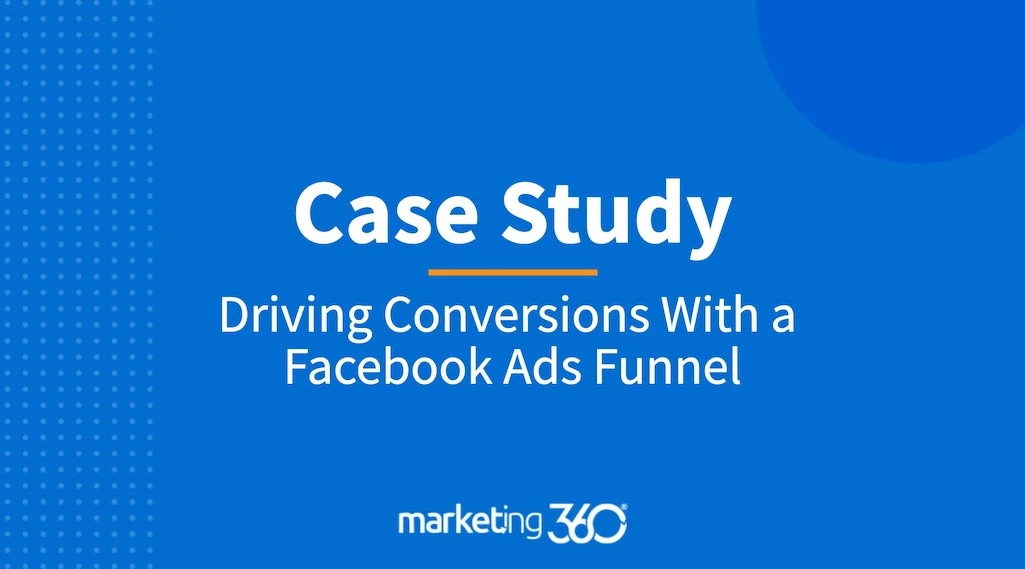 Photo courtesy of Marketing360 via blog.marketing360.com
Photo courtesy of Marketing360 via blog.marketing360.com
This case study example from Marketing 360 illustrates the potency of a Facebook ads sales funnel for B2B marketing. A series of social media advertising that targets a particular audience at each stage of the buying process is known as an ads funnel.
You may direct new leads through the sales funnel and convert them into paying customers by outlining the buyer's journey and developing a social media marketing ad campaign for each stage. A truck lift manufacturer saw a 235% boost in conversions as a result of this social media strategy.
Marketing 360: Facebook Ad Funneling
Platform: Facebook
What worked: Through the use of Facebook Ad Funneling, Marketing 360 was able to increase its conversion rate by 235% thus increasing sales leads and turning them into paying customers.
5. Coca Cola’s #ShareACoke
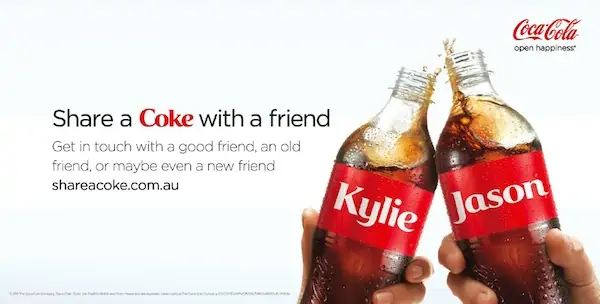 Photo courtesy of Marketingmag.com.au via Pexels
Photo courtesy of Marketingmag.com.au via Pexels
Coca-Cola created a Share a Coke campaign, where they printed popular names on their soda bottles and encouraged people to share photos on social media with the hashtag #ShareACoke.
- The campaign generated over 500,000 photos shared on social media using the hashtag #ShareACoke.
- Sales volume for Coca-Cola increased by 2.5% during the campaign period.
- Coca-Cola's Facebook page received a whopping 870% increase in traffic during the campaign period.
Campaign: #ShareACoke
Platform: Twitter, Facebook, and Instagram
What Worked? Coca-Cola's "Share a Coke" campaign was successful because it personalized Coke bottles and cans with customers' names, encouraged social media sharing using the hashtag #ShareACoke, tapped into emotions, had a global reach, and resulted in a sales increase of 2.5%. These factors, among others, contributed to the campaign's success in engaging with customers and increasing brand loyalty.
6. Old Spice’s “The Man Your Man Could Smell Like”
In 2010, Old Spice launched a viral campaign on social media called "The Man Your Man Could Smell Like." The campaign featured a series of humorous videos featuring actor Isaiah Mustafa. The campaign was a huge success and resulted in a 107% increase in Old Spice sales. During this campaign, Furthermore, Old Spice’s Twitter following increased by 2,700%. This campaign likewise generated over 1.4 billion social media impressions during the first week.
Campaign: The Man Your Man Could Smell Like
Platform: Twitter, Youtube, and Facebook
Campaign outline: The 2010 Old Spice social media marketing campaign, known as "The Man Your Man Could Smell Like," was a multi-faceted campaign that leveraged various social media platforms to engage with consumers and drive sales.
What worked? The 2010 Old Spice social media marketing campaign worked because it was innovative, engaging, and effective at driving sales and building brand awareness. The campaign demonstrated the power of social media as a marketing tool and set a new standard for other brands to follow.
7. Dove’s “Real Beauty Sketches”
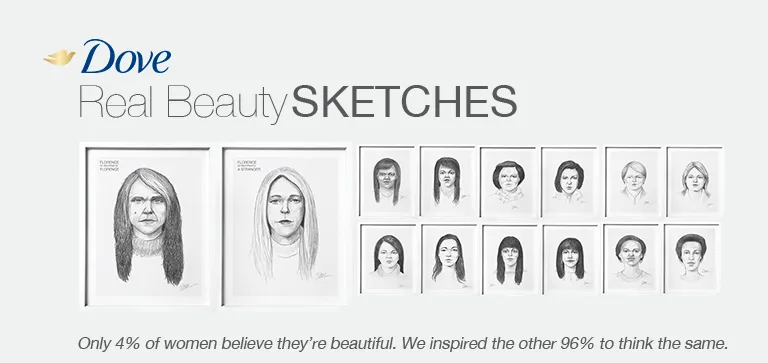 Photo courtesy of Dove via Medium.com/ad-discovery
Photo courtesy of Dove via Medium.com/ad-discovery
In 2013, Dove launched a campaign on social media called "Real Beauty Sketches." The campaign featured a forensic artist who drew sketches of women based on their own descriptions of themselves and then drew sketches of the same women based on descriptions from other people. The campaign was a huge success, and the video has been viewed over 163 million times.
- The video was shared widely on social media, with over 4.6 million shares on Facebook and Twitter.
- Increased brand awareness. The campaign helped to increase Dove's brand awareness, with a 30% increase in sales in the first six months after the campaign's launch.
Campaign: Real Beauty Sketches
Platform: Twitter, Facebook, and Youtube
Campaign outline: Dove's "Real Beauty Sketches" campaign, launched in 2013, aimed to challenge conventional standards of beauty and promote self-confidence among women.
What worked? Dove’s "Real Beauty Sketches" campaign resonated with people because of its emotionally engaging content, unique approach, and positive message. It was a powerful example of how a brand can use its platform to promote a positive message and drive social change.
8. Wendy’s #NuggsForCarter
In 2017, Wendy's launched a Twitter campaign called "#NuggsForCarter." The campaign began when a teenager named Carter Wilkerson asked Wendy's how many retweets he needed to get free chicken nuggets for a year. Wendy's responded with a challenge: 18 million retweets.
The campaign received over 3.43 million retweets - making it the most retweeted tweet of all time at the time of the campaign. The campaign likewise generated a significant amount of engagement for Wendy's on social media, with the brand receiving thousands of tweets and mentions from users participating in the campaign.
dium.com
Campaign: “NuggsForCarter”
Platform: Twitter
What Worked? Wendy’s Social media campaign generated a significant amount of engagement #NuggsForCarter campaign was a fun and engaging way for Wendy's to connect with its audience on social media. The campaign's lighthearted and humorous tone resonated with users, generating widespread engagement and media attention.ent for Wendy's on social media, with the brand receiving thousands of tweets and mentions from users participating in the campaign.
Why social media important for business?
The role of social media marketing is that it allows marketers to connect and interact with potential customers on social media sites like LinkedIn, Twitter, Youtube, Facebook, or Instagram. Marketers can engage their audience with a solid social media strategy and the ability to provide interesting content. Here are the thre reasons why engaging in social media marketing is the right move for your company.
1. Increases brand awareness
Social media marketing can help you personalize your business while fostering loyalty, respect, trust, and authority. This is so because social media marketing increases your brand credibility and trustworthiness. through the publication of materials that highlight the customers that actually use your brand.
2. Boosts website traffic
Ideally, your social network post should direct visitors to your website, which is most likely where they will wind up. By considering your social media sales funnel, your lead can locate your material on a social media platform and ultimately visit it for more information. As what was done in the case of “Marketing 360”. In doing this, you can draw visitors to your website, thus increasing website traffic.
3. Improved brand loyalty
Your customers will find you and connect with you more easily if you have a social media presence. You are more likely to increase client loyalty and retention by interacting with your customers on social media. Considering one of the primary objectives of practically any business is to build a loyal customer base. Brand loyalty and customer happiness frequently go hand in hand.
Key takeaway
While social media marketing may be beneficial to your company, you must first know how to take advantage of this strategy. This knowledge may be sourced from studying and applying case studies of successful marketing strategies. By benchmarking your marketing strategies from unique and successful marketing campaigns, you can boost not only brand awareness but also customer engagement.
That said, here are some important and digested takeaways that you can take with you should you decide to engage in social media marketing:
- Always ensure that your social media marketing is effective. Social media marketing campaigns entail time and resources to implement. So, you have to make sure that your social media marketing is effective by considering factors such as: reach, impressions, mentions, and your customer service.
- Consider Studying Successful Social Media Campaigns. By studying and analyzing how some social media campaigns became successful, you can benchmark and pattern your social media campaigns from them. This allows you to not only have some parallelism with their successful campaign, but also garner any benefits that may result from what has been tried, tested, and proven.
- Engage in social media marketing. Through social media marketing, you can increase brand awareness, brand reach, and customer engagement. This is because of the unique features of social media platforms as well as the sheer number of social media users.
If you have any questions or inquiries, reach out to us on Facebook, X, or LinkedIn, and we’ll be happy to assist you in your app campaigns.
Never miss a bit from the Propelrr blog and make sure to subscribe to our newsletter to get the latest in digital marketing stories and tips in your inbox!
